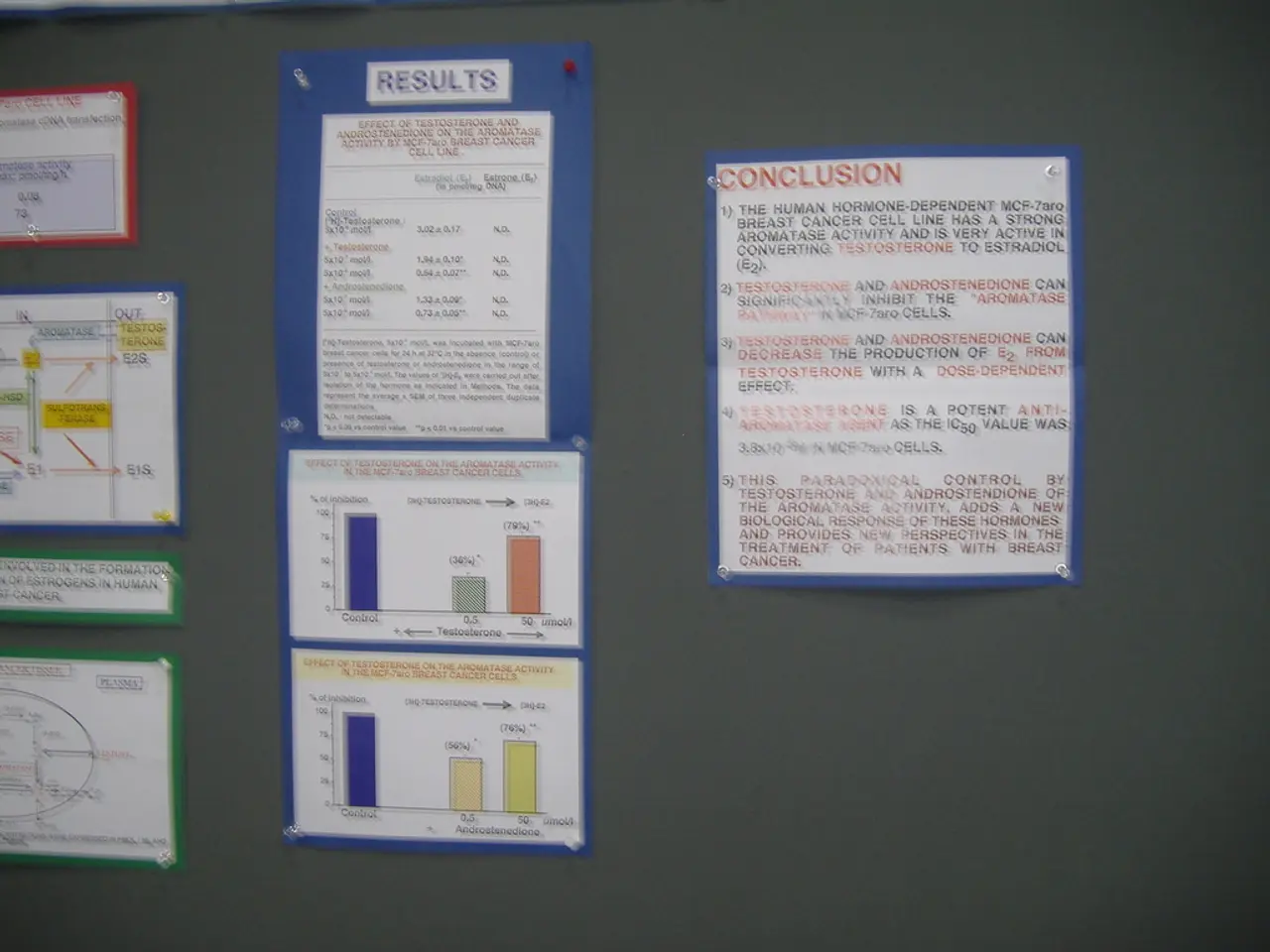Issues with Dental Implants: A Look at Possible Complications, Symptoms, Hazards, and Further Details
Dental implant surgery is a popular solution for missing teeth, offering benefits such as improved appearance, enhanced biting and chewing function, and prevention of bone loss. However, it's essential to understand the potential risks involved, particularly the long-term complications that can arise from biological, mechanical, or patient-related factors.
Biological Complications ------------------------
One of the most common long-term complications is peri-implantitis, an inflammatory disease affecting the tissues around the implant. It starts as peri-implant mucositis (inflammation of the soft tissue) and can progress to involve bone loss, potentially resulting in implant failure. Untreated peri-implantitis can lead to bone loss, implant loosening or loss, and systemic spread of infection, increasing the risk of heart disease, diabetes, kidney failure, and respiratory problems if the infection enters the bloodstream. Smoking, poor oral hygiene, a history of periodontal disease, and systemic conditions like diabetes or osteoporosis increase vulnerability to peri-implantitis.
Another biological complication is infection at the implant site, which can lead to pain, swelling, and potentially implant loss if not promptly addressed. In some cases, implants may fail to fuse properly with the bone, resulting in instability and eventual failure.
Mechanical and Prosthetic Complications ----------------------------------------
Mechanical overload, poor implant design, or material fatigue can cause implant fractures, though they are less common than biological issues. Fractures typically require implant replacement. Prosthetic components (crowns, abutments) may loosen or break, especially in the first six months, but can also occur over longer periods. Poorly designed or placed implants can lead to food getting stuck, gum irritation, or even loss of adjacent teeth.
Systemic and Patient-Related Factors -------------------------------------
Chronic conditions like diabetes, osteoporosis, and cardiovascular disease can impair healing and bone metabolism, elevating the risk of implant failure. Patients with these conditions may experience lower implant survival rates over time.
Aftercare and Prevention ------------------------
Regular professional cleanings and good home care are essential to prevent complications. Annual radiographs and clinical evaluations help detect early signs of problems, allowing for timely intervention. Proper post-surgical care reduces the risk of infection and inflammation, which are critical for long-term implant stability.
Upper jaw dental implants can protrude into sinus cavities, causing inflammation of the sinuses (sinusitis). Symptoms include pain, tenderness, or swelling around the cheeks, eyes, or forehead, green or yellow nasal mucus, a blocked nose, a reduced sense of smell, sinus headaches, toothache, bad breath, and a high temperature. If you experience these symptoms after dental implant surgery, seek medical attention.
In conclusion, while dental implants have high success rates, long-term complications—primarily peri-implantitis, infection, mechanical failure, and prosthesis-related issues—are not uncommon and can significantly impact oral and systemic health. Risk is heightened by poor oral hygiene, smoking, and systemic diseases. Regular monitoring, excellent aftercare, and tailored treatment planning are essential to maximize implant longevity and minimize adverse outcomes.
References: 1. Albrektsson T, Zarb GA, Worthington P, et al. (1986) Osseointegration: an update. Part 1: the state of the art. Int J Oral Maxillofac Implants, 1(1): 1-15. 2. Lindhe J, Meyle J, Albrektsson T, et al. (2008) Peri-implantitis: a review. Int J Oral Maxillofac Implants, 23(6): 849-863. 3. Lindhe J, Meyle J, Zarb GA, et al. (2012) Peri-implantitis: a position paper. Int J Oral Maxillofac Implants, 27(3): 371-385. 4. Spear, D. (2010) Dental Implants: A Comprehensive Guide to Treatment Planning and Restoration. Saunders Elsevier. 5. Lindhe J, Eriksson U, Zarb GA, et al. (1992) Osseointegrated implants: a review of complications. Int J Oral Maxillofac Implants, 7(2): 103-111.
- Understanding the potential long-term complications of dental implant surgery is crucial, as peri-implantitis, an inflammatory disease affecting the tissues around the implant, is a common complication.
- Peri-implantitis may initially present as peri-implant mucositis, a type of inflammation of the soft tissue, but if untreated, it can progress to involve bone loss, leading to implant failure.
- Untreated peri-implantitis can increase the risk of heart disease, diabetes, kidney failure, and respiratory problems due to systemic spread of infection.
- Smoking, poor oral hygiene, a history of periodontal disease, and systemic conditions like diabetes or osteoporosis increase vulnerability to peri-implantitis.
- Infection at the implant site is another biological complication that can lead to pain, swelling, and potentially implant loss.
- Mechanical overload, poor implant design, or material fatigue can cause implant fractures, though they are less common than biological issues.
- Prosthetic components like crowns and abutments may loosen or break, and poorly designed or placed implants can lead to food getting stuck, gum irritation, or even loss of adjacent teeth.
- Chronic conditions like diabetes, osteoporosis, and cardiovascular disease can impair healing and bone metabolism, increasing the risk of implant failure.
- Regular professional cleanings, good home care, annual radiographs, and clinical evaluations help prevent complications and detect early signs of problems.
- Proper post-surgical care reduces the risk of infection and inflammation, which are critical for long-term implant stability.
- Upper jaw dental implants can cause inflammation of the sinuses (sinusitis), leading to symptoms such as pain, swelling, sinus headaches, toothache, and nasal congestion.
- To minimize adverse outcomes, risk is heightened by poor oral hygiene, smoking, and systemic diseases, and regular monitoring, excellent aftercare, and tailored treatment planning are essential for implant longevity.
- Dental implants have high success rates, but long-term complications like peri-implantitis, infection, mechanical failure, and prosthesis-related issues can significantly impact oral and systemic health.
- Preventive measures and therapies for chronic diseases, such as diabetes, obesity, and mental health, are part of the overall health-and-wellness approach, which includes fitness-and-exercise programs, skin-care routines, and various treatments for conditions ranging from multiple sclerosis and cancer to eye-health issues and skin conditions.




